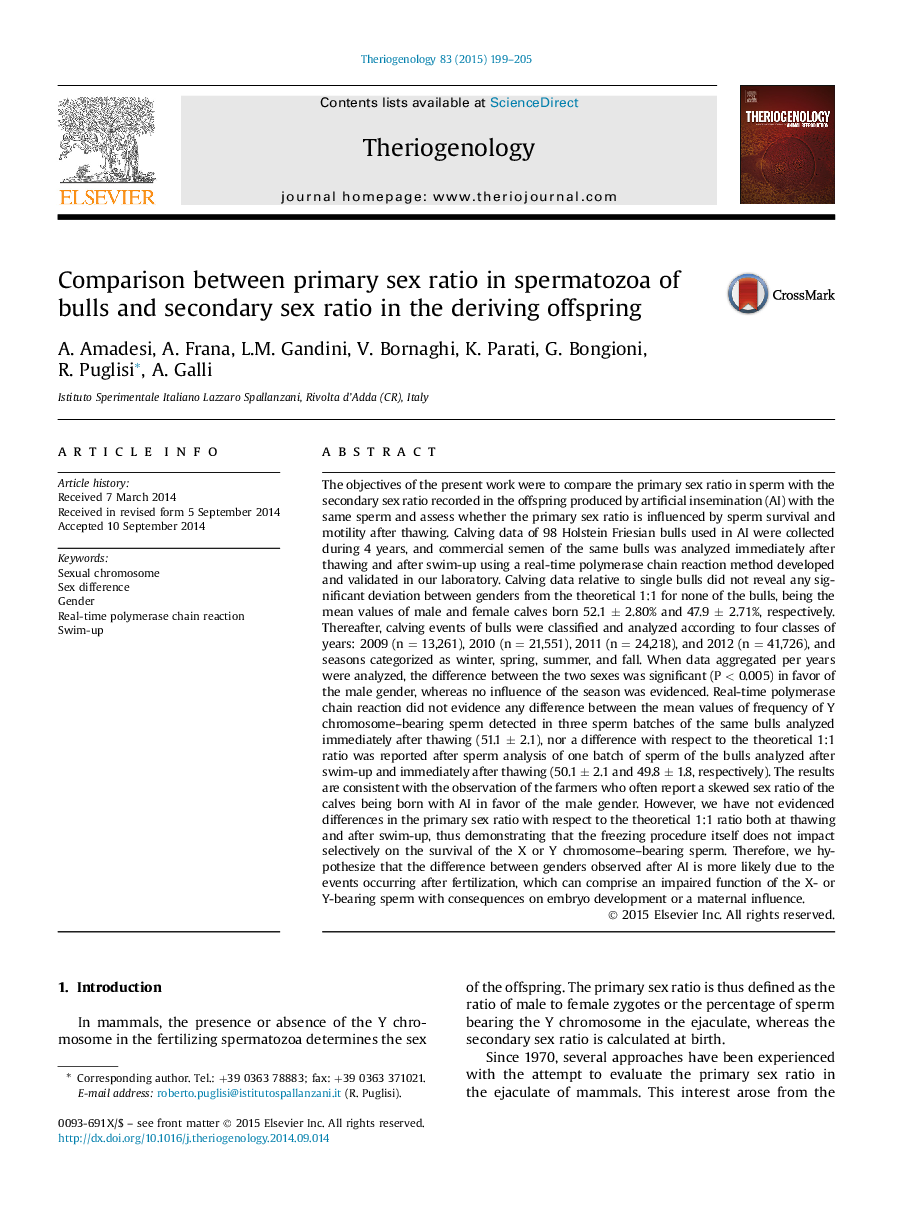| کد مقاله | کد نشریه | سال انتشار | مقاله انگلیسی | نسخه تمام متن |
|---|---|---|---|---|
| 2095235 | 1082084 | 2015 | 7 صفحه PDF | دانلود رایگان |
The objectives of the present work were to compare the primary sex ratio in sperm with the secondary sex ratio recorded in the offspring produced by artificial insemination (AI) with the same sperm and assess whether the primary sex ratio is influenced by sperm survival and motility after thawing. Calving data of 98 Holstein Friesian bulls used in AI were collected during 4 years, and commercial semen of the same bulls was analyzed immediately after thawing and after swim-up using a real-time polymerase chain reaction method developed and validated in our laboratory. Calving data relative to single bulls did not reveal any significant deviation between genders from the theoretical 1:1 for none of the bulls, being the mean values of male and female calves born 52.1 ± 2.80% and 47.9 ± 2.71%, respectively. Thereafter, calving events of bulls were classified and analyzed according to four classes of years: 2009 (n = 13,261), 2010 (n = 21,551), 2011 (n = 24,218), and 2012 (n = 41,726), and seasons categorized as winter, spring, summer, and fall. When data aggregated per years were analyzed, the difference between the two sexes was significant (P < 0.005) in favor of the male gender, whereas no influence of the season was evidenced. Real-time polymerase chain reaction did not evidence any difference between the mean values of frequency of Y chromosome–bearing sperm detected in three sperm batches of the same bulls analyzed immediately after thawing (51.1 ± 2.1), nor a difference with respect to the theoretical 1:1 ratio was reported after sperm analysis of one batch of sperm of the bulls analyzed after swim-up and immediately after thawing (50.1 ± 2.1 and 49.8 ± 1.8, respectively). The results are consistent with the observation of the farmers who often report a skewed sex ratio of the calves being born with AI in favor of the male gender. However, we have not evidenced differences in the primary sex ratio with respect to the theoretical 1:1 ratio both at thawing and after swim-up, thus demonstrating that the freezing procedure itself does not impact selectively on the survival of the X or Y chromosome–bearing sperm. Therefore, we hypothesize that the difference between genders observed after AI is more likely due to the events occurring after fertilization, which can comprise an impaired function of the X- or Y-bearing sperm with consequences on embryo development or a maternal influence.
Journal: Theriogenology - Volume 83, Issue 2, 15 January 2015, Pages 199–205
